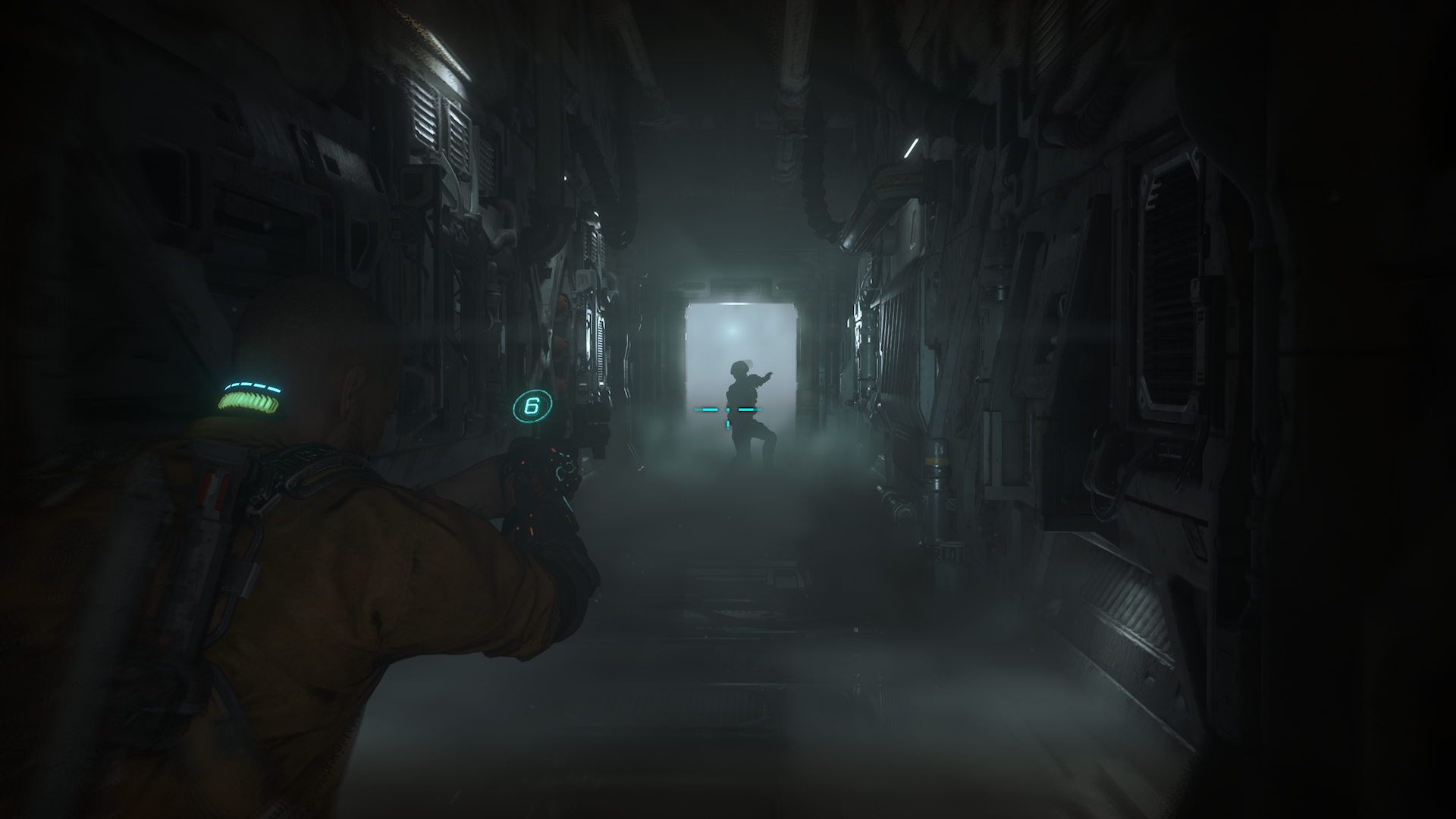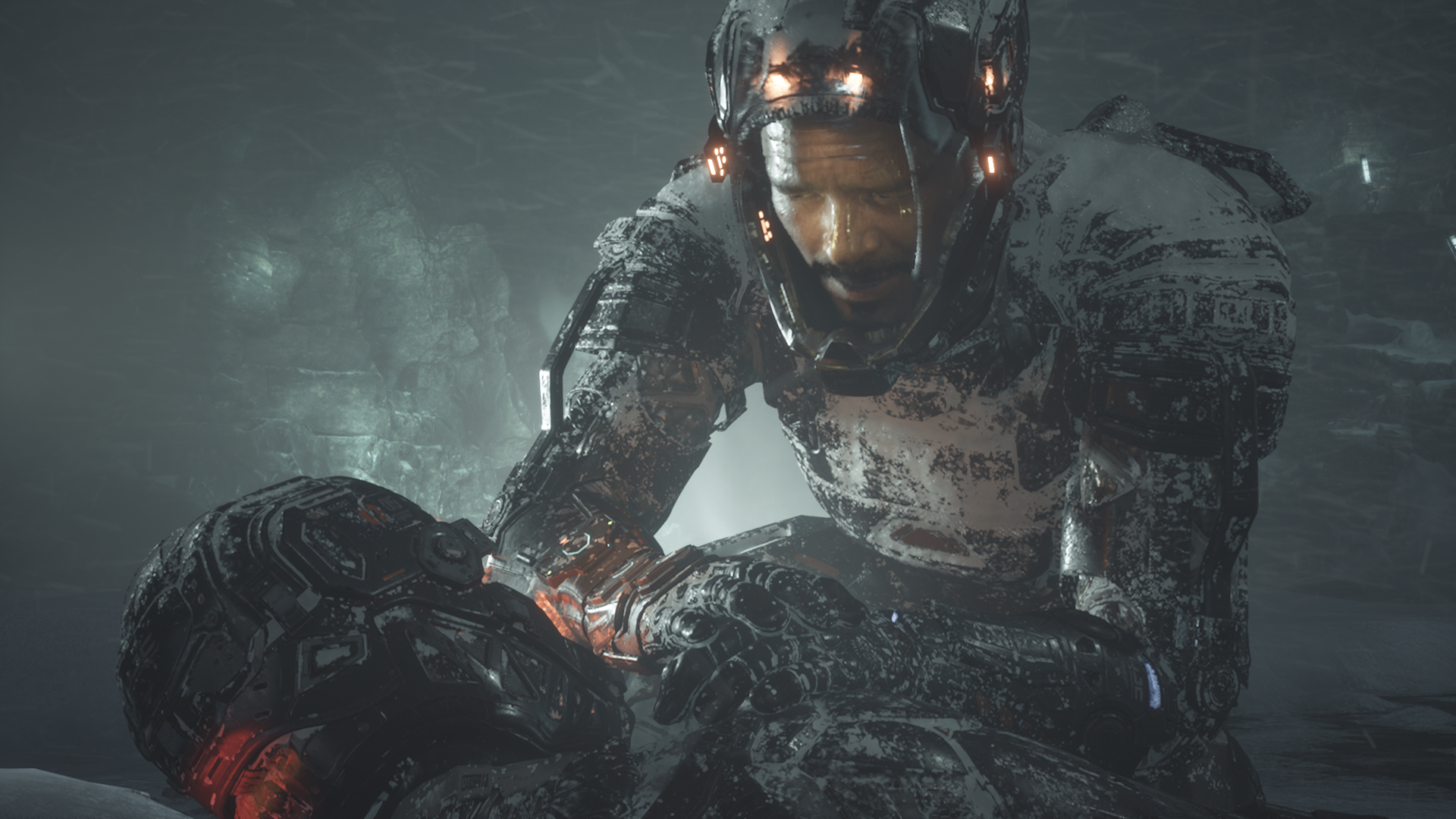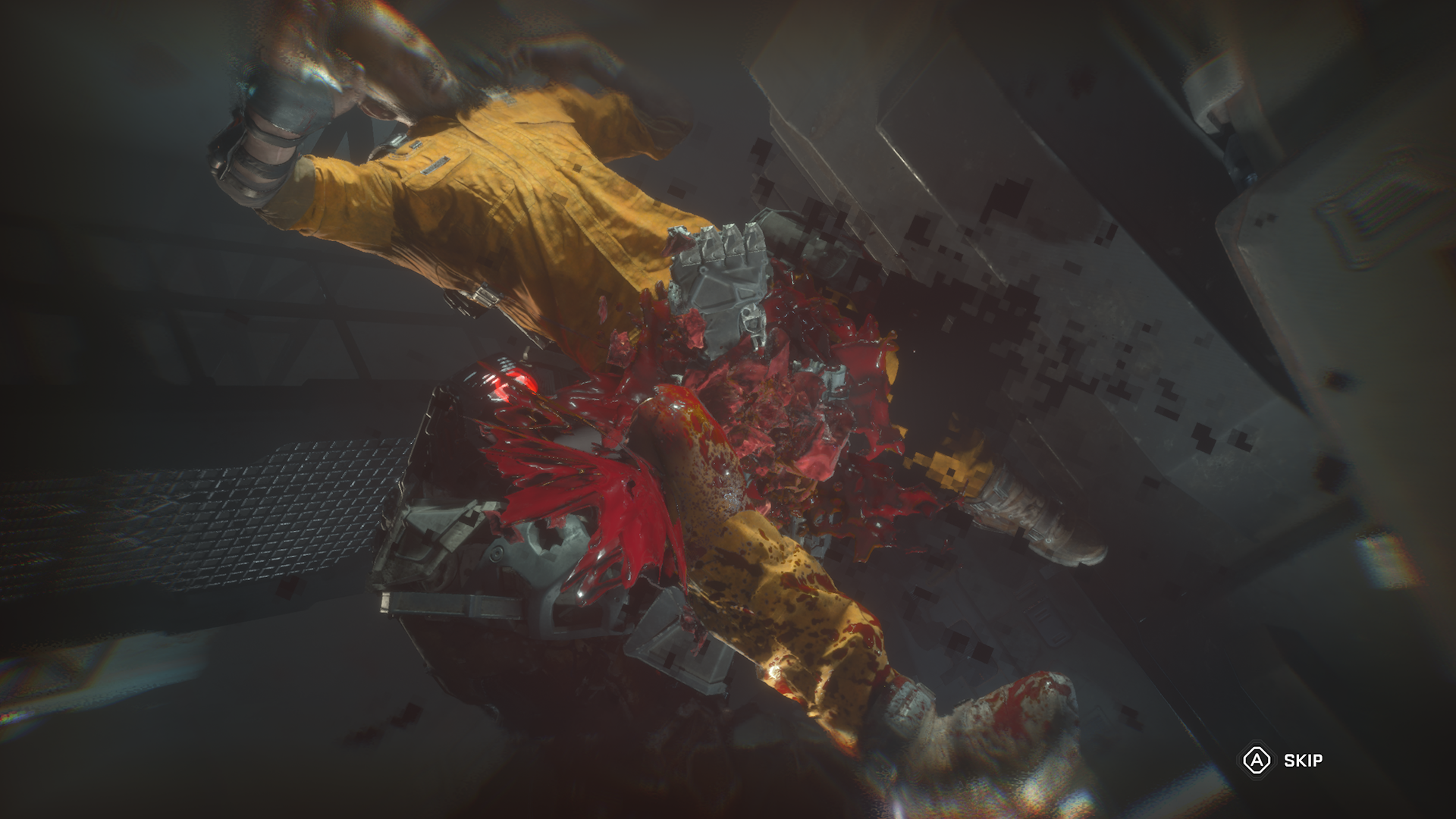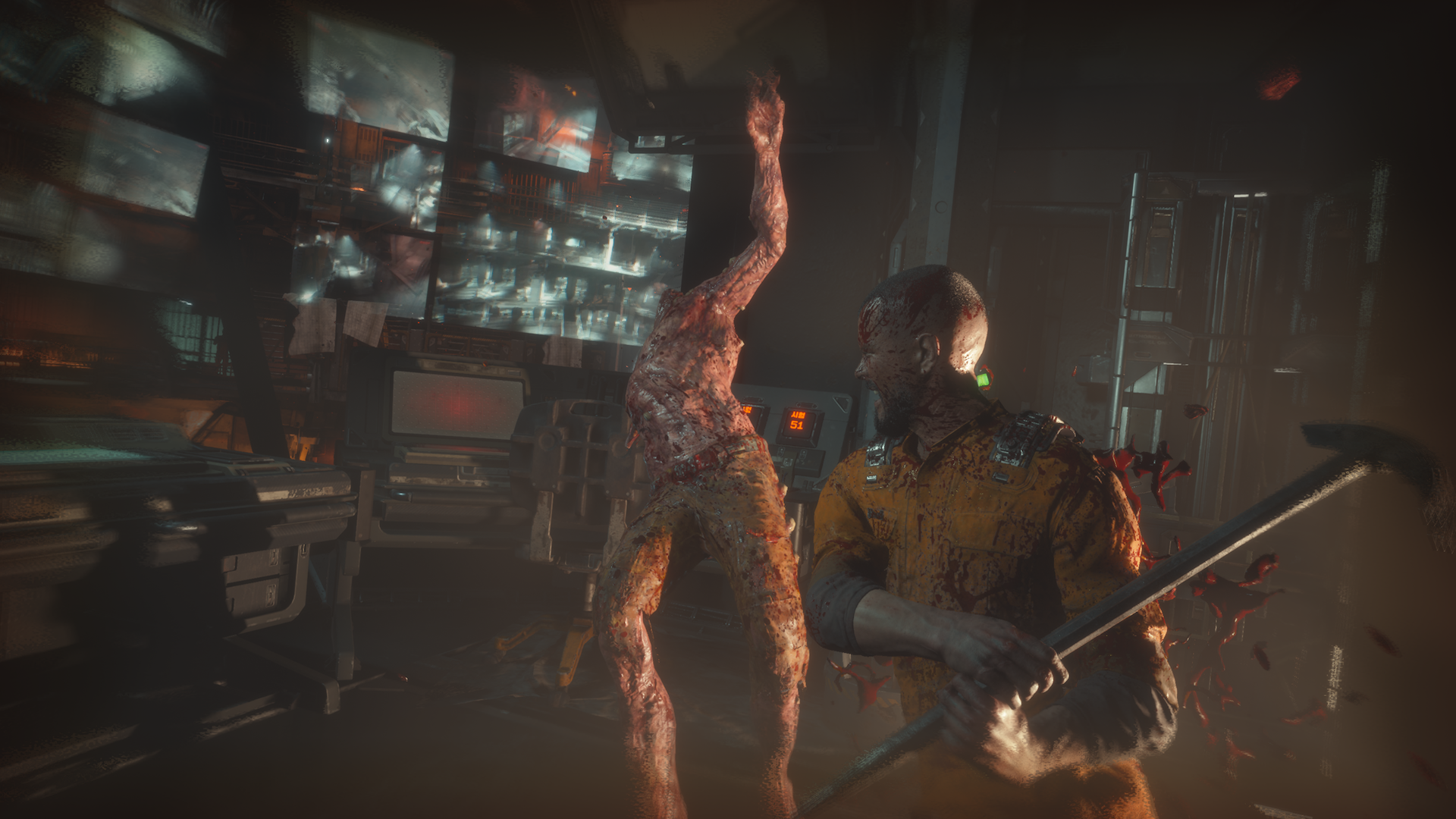Does The Callisto Protocol leave a dead space inside me?
I’ve finally gotten around to playing what far too many major reviewers are calling one of the worst games of 2022, and I have to say that that assessment is pretty inaccurate. The Callisto Protocol is far from the worst game of 2022. It’s polished and well put together, and if it weren’t for its association with a certain other sci-fi horror video game then I doubt it would have received this much backlash. It gets a lot right, but it’s also quite flawed, meaning it’s understandable that some people were disappointed with the game, but the worst game of the year? No.
You play as Jacob Lee, a space trucker making a delivery to the titular moon, Callisto. After some shenanigans, you crash land close to a prison station on the celestial body, resulting in the death of your co-pilot, and your incarceration in the corrective facility with no clue as to why. After an “induction”, Jacob is taken to his cell, and the next thing you know the whole prison is swarming with zombie-like monsters, forcing Jacob into a fight for survival and hopefully escape.
Whilst there are a couple of plot twists and turns as well as a little bit of intrigue involving visions that Jacob occasionally has, the story here is pretty standard science fiction horror fare, and there’s a fair chance you’ll have figured out what’s going on reasonably quickly. There’s a setup for a sequel at the end, but I don’t think the storyline was really a strong point here, and the ending didn’t leave me clamouring for more of this tale, even with the couple of unanswered questions left behind.

The gameplay itself is pretty linear, with you guiding Jacob from one place to another within the prison complex and beyond. The very close camera isn’t always conducive to combat — more on that later — but it maintains a claustrophobic feeling throughout. What also keeps things claustrophobic is the absurd number of vents and tight spaces that Jacob needs to crawl and shimmy through. I realise that this has become a video game trope in recent years, but my god there are a lot of them. Additionally, it’s rare that anything of any interest happens during these sections, meaning you slowly move along to hide the loading screen that is inevitably hidden by these moments. Exploration leads to finding very brief audio logs that fill in a little bit of additional story, as well as extra ammo and health items to see you through your adventure.
There’s a lot of walking during which nothing much happens in The Callisto Protocol, but you will have to defend yourself fairly frequently too, and in spite of the game that this is promoting itself on the back of, the combat is mostly melee focused. You’ll be locked into combat with an enemy and need to dodge left and right to avoid attacks before having a go yourself. Holding left or right on the left stick will automatically sway you out of the way of an attack, so long as you alternate between enemy swings. Wait for an opening and then hit the right trigger to swing back a few times. After you land a couple of attacks you may reveal a weak point, and a quick press of the left trigger will target it, allowing you to shoot it for bonus damage. Rinse and repeat until victory. You have the option to use your guns too, but they don’t do huge damage and ammo is quite limited. The shotguns are really satisfying to use at least.

As a system, it’s quite elegant, and I initially quite liked the back-and-forth of a combat encounter. Hits feel weighty from both sides, and the fantastic animation lends a visceral feeling to the battle. The problem is that every fight plays out like this, to the point it ends up feeling more like a quick-time event. Yes, enemies hit hard and you can get violently killed quickly, but in most cases you won’t need to worry about that. I say most, because the game has a tendency to make things very difficult by simply throwing five plus enemies at you at once. Your shooting can help a little here, but once foes get in close, the camera locks into the nearest one meaning ranged opponents, and those off-camera can quite happily get hits on you without you having a reliable way to dodge. It feels unfair and like artificial difficulty. You’ve not been cleverly outdone, you’ve just taken lots of cheap shots.
You have telekinesis in the form of your GRP device to lift and throw enemies into the array of environmental hazards which is fun. However, the energy runs out on it quickly, and using a recharge or healing item during combat is a death sentence. I liked having this option, and the means to instantly kill foes are rife, meaning you always have that option available. I’d have liked it if the GRP had been used more creatively, perhaps for some light puzzle solving, or to move objects during combat to open up new options. It feels like a missed opportunity beyond the combat applications.
So far, it’s a pretty mixed bag, but the presentation does a lot of heavy lifting in The Callisto Protocol. It looks fantastic throughout, and the animation is generally very well done. Every movement, be it a slow walk or a vicious swing with a weapon looks smooth and feels genuine. Yes, some of those animations are overwrought, such as the upgrade station’s 3D printing, or the door opening sequences, but they all look great.

The world can be included here too. Whilst a lot of it is dingy, gore-soaked corridors, they’re very in keeping with the atmosphere, and the time you spend on the surface of Callisto during a snowstorm is outstanding. Bodies frozen whilst standing upright occasionally bursting forth with monsters, snow sticking to your suit, and crumbling walkways really sell the treacherous nature of the outdoor environment. It’s impressive how well these playable sections transition into cutscenes too. Whilst there are still fade-to-black moments that lead to a cutscene, you’ll frequently slip in and out of them in the middle of gameplay, and it shows just how well the developers have used the Unreal Engine.
Sadly, the enemies themselves don’t seem to have had a huge amount of attention put into them by comparison. They all look good, don’t get me wrong, but they’re pretty generic. Pretty much every enemy is a zombie in varying states of decay, and the vast majority fight you in the same fashion. There’s not a lot of creativity here, which is a real shame. Sometimes there are big robots to sneak past, and there are blind enemies that react to sounds — unless the sound is of one of their friends getting shivved in the back of the head — but they mostly fall into the slimy zombie design.
And that kind of leads to the biggest flaw in The Callisto Protocol as a horror game. It just isn’t really that scary. Generic enemies and combat that aren’t all that dangerous don’t really elicit terror, and the occasional jump scare doesn’t feel that earned. Remember that moment at the start of Dead Space when you saw everyone attacked and butchered by Necromorphs? That’s missing. You only really see the horrors when they run at you, meaning you’re ready to fight, not cowering away. The only time you see what your enemies could do to you is when you die, and you’re treated to a wonderfully gory and fabulously animated death sequence. The problem is that you’ve then got to replay the part that culminated in that death, and any tension that there might have been has now passed.

The Callisto Protocol is by no means a bad game. It’s well put together, well acted, and glorious to look at. There’s clear love from the developers here, but numerous design missteps make the gameplay and overall experience less enjoyable than it could be. Whilst I’m not clamouring for more of this story, I’d be interested to see what the team could do with their next game. Perhaps if they create something of their own, rather than chasing a success from the past they could make something genuinely special.
The Callisto Protocol is available now on PC, Xbox, and Playstation.
Comments are closed.